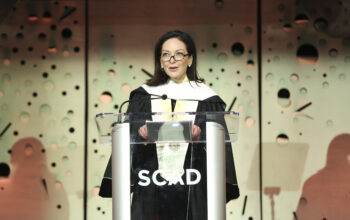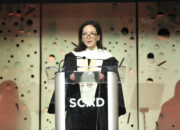In the realm of artificial intelligence, various models have emerged, each exhibiting distinctive strengths across a multitude of applications, particularly in mathematical problem-solving. This article endeavors to dissect the performance of several prominent AI models in mathematical contexts, elucidating their methodologies, advantages, and comparative efficacy. The discussion will traverse from classical approaches to contemporary neural networks, focusing on how these models perform when faced with mathematical challenges.
The landscape of AI-driven mathematics is predominantly occupied by a few notable models: traditional symbolic AI, artificial neural networks (ANNs), and, more recently, advanced architectures like transformers. Each of these paradigms embodies unique traits conducive to varied mathematical inquiries.
1. Traditional Symbolic AI
Traditional symbolic AI relies upon pre-defined logical structures, engaging in manipulation of symbolic representations of mathematical entities. This method has historic significance in the field and has laid the groundwork for subsequent advancements. Classical systems such as Prolog exemplify this approach, which utilizes rule-based logical reasoning to derive conclusions.
In terms of mathematical prowess, symbolic AI excels particularly in theorem proving, where its ability to handle logical deductions systematically yields impressive results. Systems like Coq and Lean have demonstrated their mettle, proving complex theorems that require extensive logical inference. However, the rigidity of symbolic AI limits its flexibility when addressing problems beyond structured boundaries, resulting in challenges when tasked with more dynamic mathematical inquiries.
2. Artificial Neural Networks (ANNs)
Artificial neural networks represent a substantial paradigm shift in the landscape of AI, having gained prominence for their remarkable capacity to learn from vast datasets. The architecture of ANNs emulates biological neural structures, allowing them to identify patterns and relationships within complex data spaces. The applicability of ANNs spans a plethora of mathematical fields, including calculus, statistics, and linear algebra.
A striking example is the utilization of deep learning frameworks in solving differential equations. Researchers have harnessed deep networks to approximate solutions for both ordinary and partial differential equations, achieving efficiency levels that rival traditional numerical methods. The compelling advantage of ANNs lies in their ability to generalize from examples, thereby offering solutions that are not merely computational but reflective of an inherent understanding of the relationships governing mathematical phenomena.
Nevertheless, the efficacy of ANNs in mathematical contexts may be compromised by their inherent opacity. The so-called “black-box” nature of these models raises concerns regarding interpretability, as the rationale behind a given decision may be inscrutable. This detracts from the trust that mathematicians place in these solutions, especially in high-stakes applications where precision and clarity are paramount.
3. Transformers and Advanced Architectures
Emerging from natural language processing, transformers have revolutionized AI with their ability to handle sequential data effectively. Their architectural prowess enables them to model relationships across far-reaching contexts, making them increasingly relevant in mathematical applications. The advent of models like GPT-3 and its successors has demonstrated exceptional proficiency in language-driven tasks, yet its mathematical capabilities cannot be overlooked.
Transformers have shown significant promise in generating mathematical proofs and addressing complex calculations. For instance, recent research indicates that transformers can generate human-readable proofs for propositions within number theory, showcasing their potential to bridge the gap between computational efficiency and human-like reasoning. Moreover, the superiority of transformers arises from their attention mechanisms that permit a nuanced understanding of mathematical relationships, thus enhancing their problem-solving repertoire.
Despite their advances, challenges remain. The precision of transformers in mathematical tasks can sometimes oscillate, particularly when the training data does not encompass a diverse spectrum of mathematical scenarios. Alterations in context or complexity can lead to unexpected outcomes, necessitating rigorous evaluations of their applicability in sensitive mathematical disciplines.
4. Comparative Analysis of Performance
When assessing which AI model has achieved optimal performance in mathematical contexts, one must consider several pivotal factors, including accuracy, generalizability, and interpretability. While traditional symbolic AI offers unmatched clarity in logical reasoning, its limited applicability in broader mathematical scenarios diminishes its overall efficacy.
Artificial neural networks, in contrast, provide a robust framework capable of addressing dynamic mathematical problems, yet their interpretive limitations present a significant hurdle. It is within this conjunction of strengths and weaknesses that transformers emerge as a compelling candidate. Their capacity to intertwine linguistic and mathematical reasoning allows them to navigate complexities with greater agility, although efforts to enhance their consistency are ongoing.
5. Conclusion
The investigation into which AI model performs best in mathematics unveils a nuanced narrative of progress and potential. Each model—the traditional symbolic systems, artificial neural networks, and advanced transformers—contributes a distinct set of advantages and challenges. As AI continues to permeate the mathematical landscape, the synthesis of these models may herald a new era of unprecedented problem-solving capabilities, ultimately redefining our approach to mathematics itself. Continuous research and innovation in this field will undoubtedly lead to breakthroughs that further refine the capabilities of these AI architectures, enhancing their utility across diverse mathematical disciplines.










